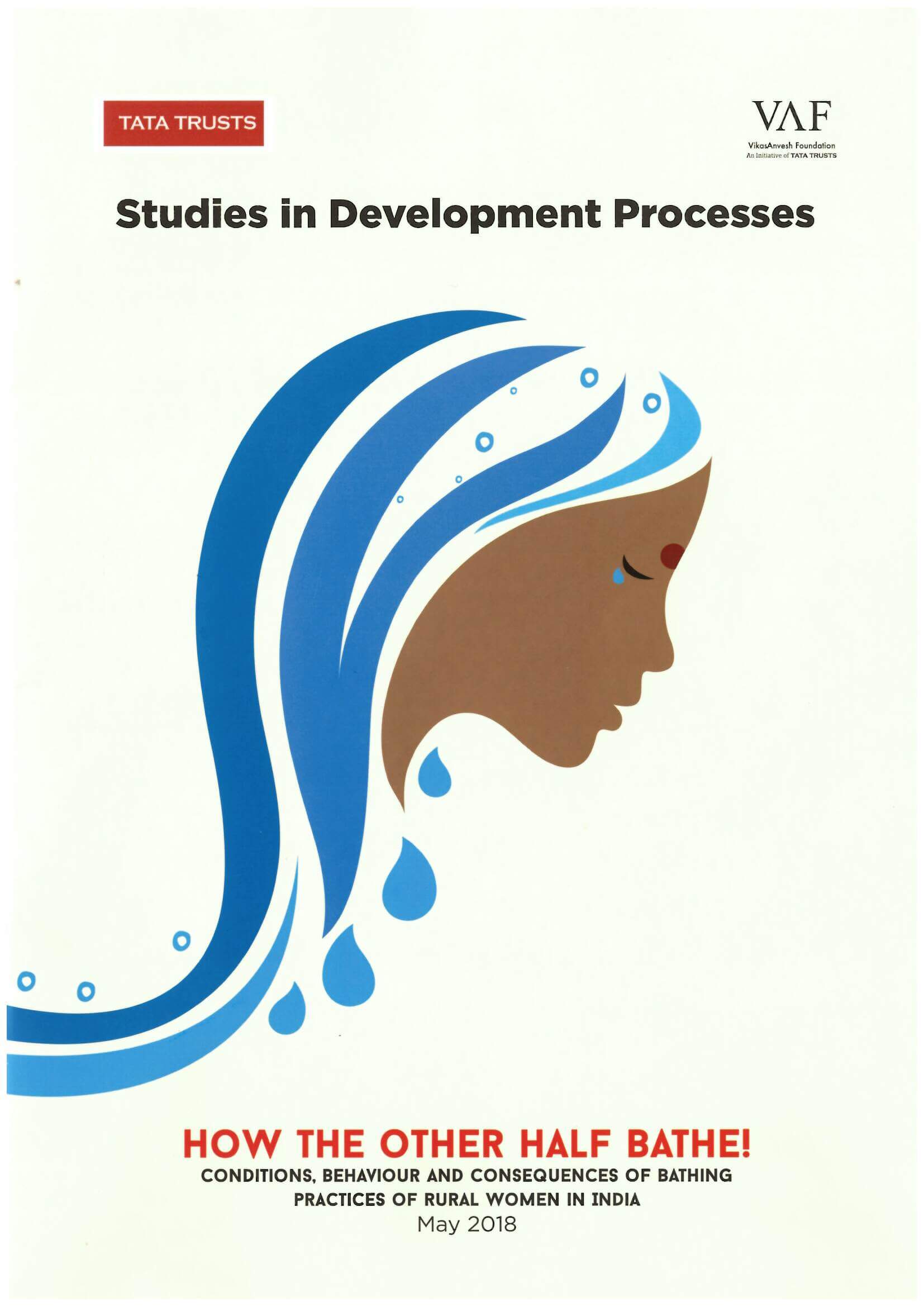Studies in Development Processes Issue #2
Authors : Minaz Ranjita Singh, Meghna Mukherjee
Bathing in a private space is a luxury for many in the rural parts of India. Census data reveals that 55% of rural households do not have a bathing space within the premises. The figure is an alarming 95% in underdeveloped states like Odisha. While construction of toilets has gathered steam in rural areas, given the awareness about the importance of closed defecation, the same cannot be said about secluded bathing spaces. The female population of rural India, which is 48.6%, suffers many hardships because of the lack of such facility. Given the circumstances, women bathe in groups in the open, in bathing ghats or ponds. The need for a secluded bathing space is not just about the right to privacy or awkwardness but more about likely consequences regarding social dignity and health.
This report is the outcome of a year-long study that explored the various conditions in which rural women take bath, their attitude and perception towards the same and the consequences they face. It consists of quantitative and qualitative analysis of primary data, collected in 44 villages across five states, namely, Jharkhand, Bihar, Rajasthan, Odisha and Madhya Pradesh, besides analysing secondary data.
The first part of the report discusses the problem tree, from root causes to consequences. It elaborates on the common realities that include rural women fetching water from distant sources, and having to bathe fully clothed in public. Not only do they bathe infrequently, they are unable to maintain genital hygiene on a daily basis, increasing the risk of various gynaecological infections.
This is then substantiated by secondary data in the form of reports from local non-governmental organisations (NGO) and a village level analysis of the census 2011 data of one of Odisha, one of the poorest states of India in terms of income and development.
To corroborate the results obtained, we carried out an exploratory field research. The field data were in the form of focus group discussions and interviews of 334 local married, unmarried or ever married resident women of the villages, between 18 and 50 years of age. Apart from this, in-depth interviews were conducted with 30 key informants such as leaders and volunteers of NGOs and local level government officials. The next section of the report discusses the observations and analysis. It was found that absence of bathing spaces in rural India is a highly neglected issue. Bathing in the open resulted in physical hardships, social awkwardness and ill- effects on the health of the participants. The primary reasons for not building bathrooms were lack of awareness, water availability, poverty and other competing priorities. After capturing the ground realities, reasons for lack of public debate on the issue are discussed which were mainly due to lack of awareness and demand from beneficiaries. The report concludes with recommendations for possible solutions and interventions that could help address this highly neglected issue.

